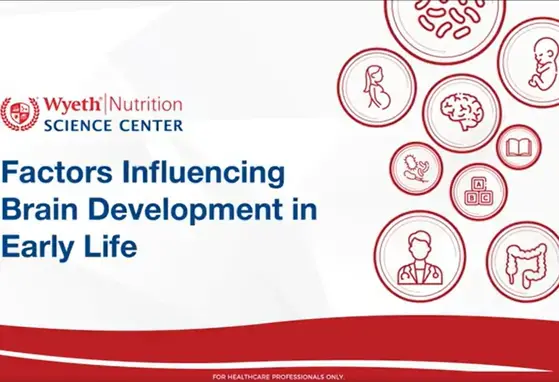Interview with Dr. Tanja Sobko - Starting Early: Prevention of Childhood Obesity

The prevalence of childhood obesity, which has a negative impact on health in later life, is increasing in Asia. An expert in interventions to prevent childhood obesity, Dr Tanja Sobko (Hong Kong) discussed its causes, her ongoing local research in the field, and how childhood obesity can be prevented and managed.
- Importance of healthy eating pattern, optimal physical activity, parenting style, environment, and sleep duration on prevention of childhood obesity
- The Targeting Early Obesity (TEO) Programme in Macau

Dr Tanja Sobko
Institute of Human Performance
The University of Hong Kong
Pokfulam, Hong Kong
- What is the prevalence of childhood obesity in Asia versus other regions? What factors might contribute to these differences?
- Is abdominal obesity a significant concern among children?
- What are the risk factors for childhood obesity?
- What specific factors might have contributed to the increase in childhood obesity in Hong Kong and China?
- How can these caregivers be educated regarding childhood obesity?
- How can parents support children to establish healthy eating patterns?
- Can you define optimal physical activity in children? What are some practical ways to incorporate adequate physical activity into their daily routines?
- What is the optimal sleep duration in terms of preventing childhood obesity?
- What is the Targeting Early Obesity (TEO) programme in Macau and how can the findings be applied locally?
- How can local healthcare providers improve the diagnosis and management of childhood obesity?
- Summary
TS: Dr Tanja Sobko
R: Reporter
R: What is the prevalence of childhood obesity in Asia versus other regions? What factors might contribute to these differences?
TS: The prevalence of childhood obesity is 11.7% in developed countries and 6.1% in developing countries.1 In Asia (excluding Japan), 4.9% of children younger than 5 years were estimated to be overweight or obese in 2010 – a 53% increase since 1990 (Table).1 This is lower than the prevalence in Africa (8.5%),1 but because more than half the children from developing countries live in Asia, the absolute numbers are greater. In Hong Kong, 14% of school-aged children were overweight in 2000/2001 (increased from 12% in 1997/1998), with 7% being obese and a higher prevalence observed in boys.2 The prevalence of childhood obesity in rural China is low (0.4%),3 but national estimates in 2005 indicated that 7.7% of Chinese youth were overweight and 3.7% of them were obese.4 Different cultural habits and socioeconomic levels impact nutrition and physical activity patterns, which in turn affect rates of obesity. Cultural attitudes to childhood weight also vary: in China, a plump child is viewed positively,5 as fatness is often associated with wealth and health, which may not be the case in Europe.
R: Is abdominal obesity a significant concern among children?
TS: Abdominal obesity was defined as a waist circumference that was greater than the gender- and age-specific 90th percentile based on data from the National Health and Nutrition Examination Survey (NHANES) III (1988–1994) in a study of 2–18-year-olds.6 Levels of abdominal fat in newborns are related to abdominal fat levels at the age of 2 years, although further studies are needed to explore whether these associations persist in later life and are related to metabolic syndrome outcomes.7 However, increased visceral adipose tissue in newborns may be associated with insulin resistance.8, 9
R: What are the risk factors for childhood obesity?
TS: The most important causes of childhood obesity are poor nutrition (including low breastfeeding rates), excessive dietary intake, low levels of physical activity, and inadequate sleep.2,10 Other risk factors include parental obesity,11 maternal education and parenting styles,10 and informal childcare.5
R: What specific factors might have contributed to the increase in childhood obesity in Hong Kong and China?
TS: With China’s economic growth came increased incomes and the ability to buy more food, but levels of education have not kept pace. Intake of unhealthy Western fast food items is often viewed as a sign of affluence. It was recently found that the majority of Hong Kong primary school children are much less active than is recommended by the health authorities, and increasingly engaged in sedentary behaviour such as ‘screen time’, which in turn leads to deteriorating health.12 Furthermore, a growing number of Hong Kong children fail to meet basic nutritional recommendations, and a high percentage of their energy intake comes from saturated fat, sugar and other calorie-dense foods,13 causing an increase in overweight and obesity levels. In urban areas, both parents often work long hours, and children are cared for by grandparents or domestic helpers who may have poor knowledge about nutrition.5
R: How can these caregivers be educated regarding childhood obesity?
TS: The Hong Kong Department of Health’s pamphlet on managing body weight in children (Figure) provides useful advice.14 We are also conducting a study targeted at Hong Kong caregivers to determine whether connecting families to nature introduces healthy routines and positively influences physical activity and healthy eating in children aged 2–4 years (unpublished data).
R: How can parents support children to establish healthy eating patterns?
TS: Children should be given water, not juice, to drink with meals.15 ‘Playing with’ and exposure to different foods (especially brightly coloured fruits and vegetables) early on reduces young children’s fear of trying new foods. Parents should not overfeed young children, and should respect their capacity for appetite self-regulation.16 Establishing healthy eating patterns and routines early in life is vital, and may regulate responsiveness to food cues and eating behaviour in later life.
“Establish correct routines for eating, being active and sleeping from the beginning.” – Dr Tanja Sobko
R: Can you define optimal physical activity in children? What are some practical ways to incorporate adequate physical activity into their daily routines?
TS: In Canada, 180 minutes per day of physical activity are recommended for children aged 1–4 years; sedentary time (including being restrained in a high chair or stroller) should be minimized during waking hours, and screen time should be limited to less than 1 hour per day for children aged 2–4 years.17 Hong Kong follows the World Health Organization’s (WHO) guidelines for children aged 5–17 years, which recommend moderate or vigorous physical activity for at least 60 minutes per day.18 Ideal ways to increase their daily physical activity include taking younger children out of their strollers and playing with them; and sport, outdoor recreation, household chores, or cycling/walking to school for older children. Nature and the natural environment can be used as resources to promote increased physical activity among Hong Kong children (unpublished data).
R: What is the optimal sleep duration in terms of preventing childhood obesity?
TS: A UK study showed that children who slept for fewer than 10.5 hours per night at the age of 3 years had a 45% higher risk of becoming obese by the age of 7, compared to those who slept more than 12 hours.19 Hong Kong parents often return from work late in the evening, which can delay their children’s bedtimes. Toddlers aged 1–3 years need 12–14 hours of sleep per day, and preschool-aged children need 11–12 hours.20, 21
R: What is the Targeting Early Obesity (TEO) programme in Macau and how can the findings be applied locally?
TS: To help governments develop locally individualized, effective preventive programmes targeting childhood obesity, it is important to understand local habits. In a research collaboration with the Macau Government, we compared families that included obese versus normal-weight parents of new-born children to look for key determinants of childhood obesity. One of our more interesting findings was that young children have identical physical activity profiles to their mothers, so mothers should be targeted as a priority – increasing their physical activity will likely have a corresponding effect on the levels of physical activity of their children (unpublished data). When the findings are published, they will be widely applicable in Hong Kong because the settings are so similar.
R: How can local healthcare providers improve the diagnosis and management of childhood obesity?
TS: Identifying abnormal patterns of weight gain in infants is a first step in reducing the risk of
obesity.16 At every well-child visit, weight-for-length or -height should be measured and the body mass index (BMI) calculated.22 These should then be plotted on WHO (for children aged 0–23 months)23, 24 or Centers for Disease
Control and Prevention (24–59 months)25 charts to monitor their growth. Children whose BMI is above the 85th percentile are overweight26 and should be targeted for intervention.
Summary: Recommended advice for healthcare providers to give parents or caregiversParents should establish correct routines for eating, being active and sleeping from the beginning. They should be made aware that overnourishment is as inadvisable as undernourishment. Because parents are role models for their children,27 they should adopt healthy lifestyle habits themselves, and avoid over-controlling their eating,16 or placing a negative emphasis on diet. Family-based interventions and specific parenting styles can reduce the risk of obesity and support weight loss in overweight children.27 |
Table. Past and predicted future prevalence of overweigt/obsesity in children aged 0-5 years in Asia: 1990-20201
| Asia and sub-regions | Year | ||||||
|---|---|---|---|---|---|---|---|
| 1990 | 1995 | 2000 | 2005 | 2010 | 2015 | 2020 | |
| Asia (%) | 3.2 | 3.4 | 3.7 | 4.2 | 4.9 | 5.7 | 6.8 |
| Eastern Asia (%) | 4.8 | 4.9 | 5.0 | 5.1 | 5.2 | 5.3 | 5.4 |
| South Central Asia (%) | 2.3 | 2.6 | 2.9 | 3.2 | 3.5 | 3.9 | 4.3 |
| South-eastern Asia (%) | 2.1 | 2.6 | 3.1 | 3.8 | 4.6 | 5.6 | 6.7 |

WYE-EM-008-JAN-15
Reference
- de Onis M, et al. Am J Clin Nutr 2010;92:1257-1264.
- Chan C. Obes Rev 2008;9 Suppl 1:87-90.
- Lakshman R, et al. J Epidemiol Community Health 2013;67:595-602.
- Ji CY, Cheng TO. Int J Cardiol 2009;132:1-10.
- Lin SL, et al. Int J Epidemiol 2011;40:1238-1246.
- Xi B, et al. Pediatrics 2014;134:e334-339.
- Durmus B, et al. Clin Endocrinol (Oxf) 2010;72:633-640.
- Ferreira AP, et al. J Perinatol 2014;34:932-935.
- Franca-Neto AH, et al. Obstet Gynecol 2014;123 Suppl 1:51S.
- Sobko T, et al. BMC Public Health 2011;11:336.
- Svensson V, et al. Int J Obes (Lond) 2011;35:46-52.
- Huang YJ, et al. Int J Behav Nutr Phys Act 2011;8:16.
- Leung SS, et al. Am J Clin Nutr 2000;72:1373S-1378S.
- Hong Kong Leisure and Cultural Services Department, Hong Kong Department of Health. Body Weight Management of Children. Available from: http://www.lcsd.gov.hk/en/healthy/common/download/child.pdf. Accessed on 29 October 2014.
- Harvard School of Public Health. Early Child Care Nutrition. Available from: http://www.hsph.harvard.edu/obesity-prevention-source/obesity-prevention/early-child-care/early-child-care-nutrition/. Accessed on 29 October 2014.
- Christoffel KK, et al. Int J Environ Res Public Health 2012;9:1227-1262.
- Canadian Society For Exercise Physiology. Canadian Physical Activity Guidelines and Canadian Sedentary Behaviour Guidelines. Available from: http://www.csep.ca/english/view.asp?x=949. Accessed on 29 October 2014.
- Hong Kong Leisure and Cultural Services Department. Fitness Programmes for Children. Available from: http://www.lcsd.gov.hk/en/healthy/fitness/over3.html#1. Accessed on 29 October 2014.
- Reilly JJ, et al. BMJ 2005;330:1357.
- National Sleep Foundation. Children and sleep. Available from: http://sleepfoundation.org/sleep-topics/children-and-sleep/page/0%2C1/. Accessed on 29 October 2014.
- CDC. Sleep and sleep disorders. Available from: http://www.cdc.gov/sleep/about_sleep/how_much_sleep.htm. Accessed on 29 October 2014.
- WikiHow. How to calculate an infant BMI. Available from: http://www.wikihow.com/Calculate-an-Infant-BMI. Accessed on 29 October 2014.
- WHO. BMI-for-age Girls: Birth to 2 years (z-scores). Available from: http://www.who.int/childgrowth/standards/cht_bfa_girls_z_0_2.pdf?ua=1. Accessed on 29 October 2014.
- WHO. BMI-for-age Boys: Birth to 2 years (z-scores). Available from: http://www.who.int/childgrowth/standards/cht_bfa_boys_z_0_2.pdf. Accessed on 29 October 2014.
- CDC. Body mass index-for-age percentiles. Boys 2 to 20 years. Available from: http://www.cdc.gov/growthcharts/data/set1clinical/cj41l023.pdf. Accessed on 29 October 2014.
- Barlow SE, Expert C. Pediatrics 2007;120 Suppl 4:S164-192.
- Sung-Chan P, et al. Obes Rev 2013;14:265-278.
If you liked this post you may also like

Factors influencing brain development in early life


[Science Update] Relationship between metabolites modulated by HMOs and reduced risk of LRTIs

[Science Update] Early-life gut ecology and reduced risk for reported LRTI